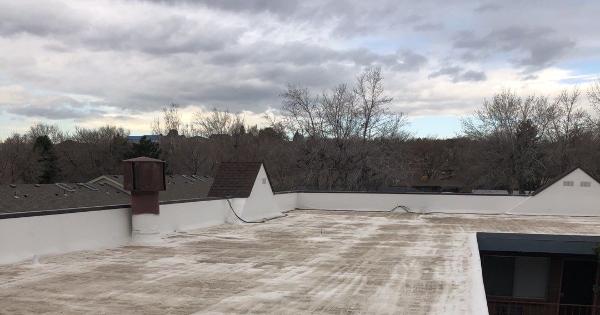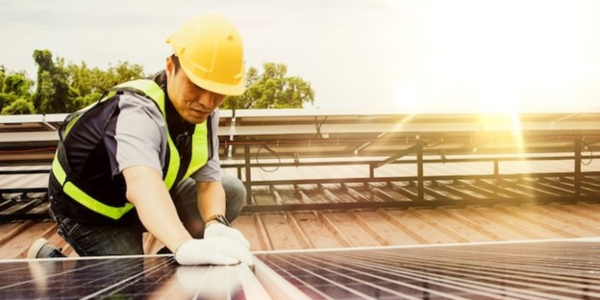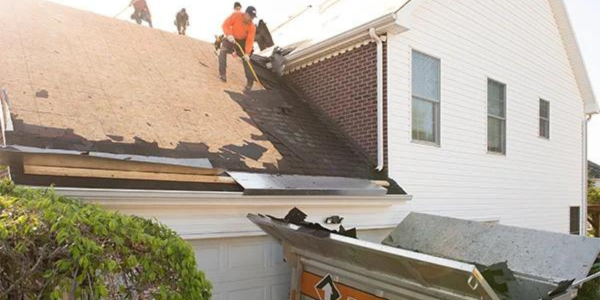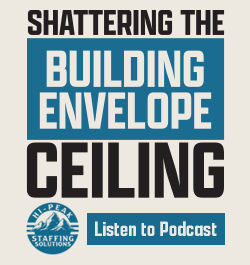Surviving the Elements - What a Roof Goes Through

By Western Colloid.
How contractors can help customers understand the different harmful elements roofs are constantly up against.
Roofs are exposed to damaging environmental elements perhaps more than any other component of the building. As roofing contractors know, roofs get blasted by ultraviolet (UV) radiation, harsh weather conditions and significant temperature changes. Explaining how roofs need to withstand the forces of wind, weather and potential exposure to harmful chemicals is critical for building owners to understand.
These conditions compound one another and render roofing materials subject to deterioration over time. Such deterioration can affect a roof’s integrity, water-shedding performance and can cause the roof to fail prematurely. This can be disruptive to building occupants and costly to building owners. Here are key conditions that should be discussed during the roofing process.
Thermal shock
Thermal shock occurs when changes in temperature happen so quickly that it stresses your roofing system materials. The surface layers contract against the inner layers, leading to the development of tensile stress and the propagation of cracks.
Rapid expansion or contraction can damage materials that have lost their elasticity. And since the different parts of a roofing system expand and contract at different rates, various simultaneous movements caused by quick, extreme temperature changes can cause problems, especially in horizontal-to-vertical transition areas.
Thermal shock can happen all year long, not just during cold weather snaps. Think of a summer shower turning into hail. Since the roof surface temperature is much hotter than the ambient temperature already, the drop in temperature in the middle of that storm is even greater. A sudden temperature drop of 30-50 degrees will stress the roof.
How thermal shock affects material life cycles and lateral movement
All materials have life cycles. Newer roofs aren’t that susceptible to thermal shock because they’re still flexible. But as the materials age, they begin to fatigue. They lose some elasticity and the ability to expand and contract at the same rate as when they were new. As a result, fatigued materials are more likely to incur damage during periods of extreme temperature changes. Typically, the older the roofing system, the higher the risk of thermal shock.
Different materials have different coefficients of thermal expansion and contraction, meaning one material will change size due to temperature changes differently than another material. So, with a roofing assembly that consists of underlayment membrane, insulation, adhesives, fasteners and top membranes, each of those materials has a different coefficient and will therefore move at a different rate.
Thermal shock resistance is the property of a material that makes it resistant to sudden and rapid temperature changes. Materials that have high thermal shock resistance properties, such as fluid or liquid applied roofing, can better withstand wide temperature variations.
UV
Sunlight strikes a roof with infrared and ultraviolet (UV) radiation. Both wavelengths work against any roofing material. Commercial roofs are attacked more by sunlight’s energy because of the way the sun strikes them. A roof is responsible for shading the rest of a building, but it pays an enormous price to bring building owners that protection.
High-energy ultraviolet (UV) attacks the composition of the roof’s surface. Whether it’s a metal roof, a modified bitumen roof or a single-ply membrane roof, a roofing system is primarily made up of chemicals. Those chemicals degrade over time from the UV light. The exposure to sunlight that causes these chemicals to deteriorate makes the surface brittle, that’s what makes reflectivity so important.
How can building owners combat UV Radiation? Two words, “cool roof” products! Share how reflective materials can combat the harm caused by UV rays. Reflective roof coating systems are the best way to achieve that protection.
Wind
Wind exerts forces on roofing, particularly on taller structures and more exposed roofing surfaces. Since the kinetic energy of wind and the resulting pressures scale as the square of the wind velocity, high-wind areas require particularly careful attention. Beyond the concern for catastrophic failure of roofing due to wind, periodic vibrations of roofing materials can lead to material fatigue and crack formation.
Harmful chemicals and organic materials
Several other important minor atmospheric components include oxides of carbon, sulfur and nitrogen. When these gases dissolve in water, acids are formed. These acids can promote corrosive chemical reactions.
Deposits on roofing originate with dry and wet deposition from the atmosphere. Products of combustion such as soot, unburned hydrocarbons, and fly ash are expected as well. Sea salt is expected (in coastal areas) as are organic compounds emitted by vegetation such as spores produced by plants and fungi. Due to the cleansing effects of rainwater, one expects that deposits on roofing may be depleted of water-soluble components.
Signs that a roof is at risk
Tiny fractures, while inherent and common in the normal aging process of a roofing system, could indicate the roofing materials are starting to dry out, making them brittle and more susceptible to stress. However, just as an asphalt parking lot can have many small cracks that can be coated to extend its life, fractures don’t always mean a roof is about to fail and needs replacing.
The fractures contractors will want to pay particular attention to are those in the roof membrane itself and in areas where there’s a transition from horizontal to vertical. Sudden movement of materials in transition areas may loosen the flashing, which can create gaps that let in water.
One of the biggest solutions to repair a damaged and aging roof is fluid applied reinforced roofing. It’s non-toxic for the environment and your crew as there are no harmful fumes or fire hazards. With its reflectivity, resistance to chemicals and elastomeric qualities it is the number one type of solution for any commercial roofing project.
Learn more about Western Colloid in their RoofersCoffeeShop® Directory or visit westerncolloid.com.























Comments
Leave a Reply
Have an account? Login to leave a comment!
Sign In